Insight into manta ray behaviour using animal-borne Crittercams
October 2023
Nicole A. Pelletier, Anna M. Knochel, Joshua D. Stewart, Niv Froman, Taylor R. Smith, Greg Marshal, Kyler Abernathy, Julie Hawkins & Guy M.W. Stevens
Keywords: Maldives • Mexico • Mobula alfredi • Mobula birostris • Mobulid
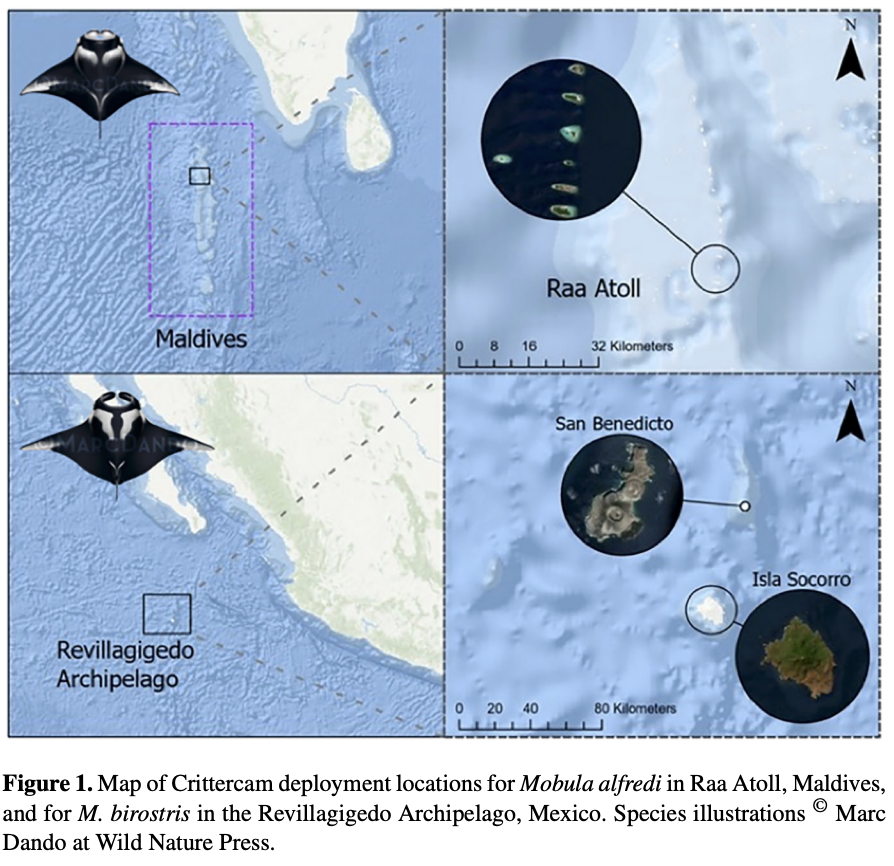
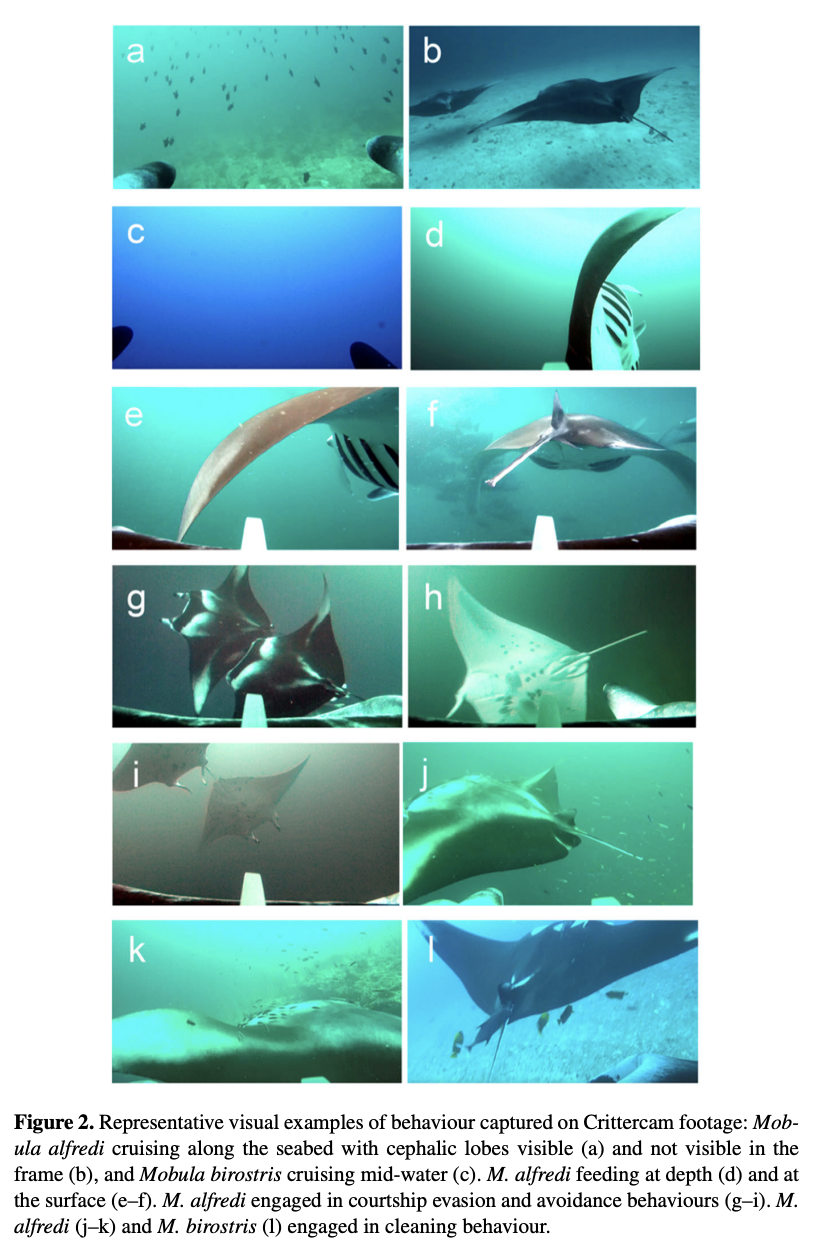


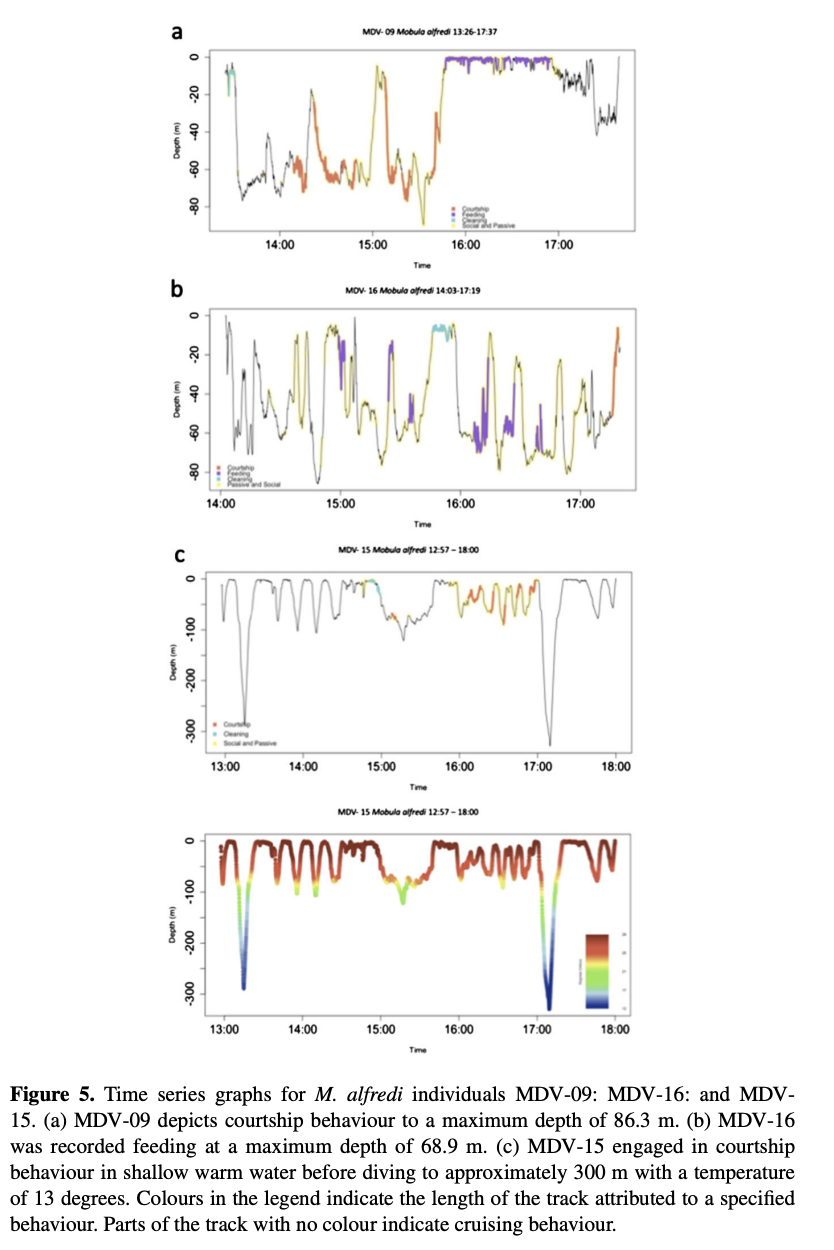
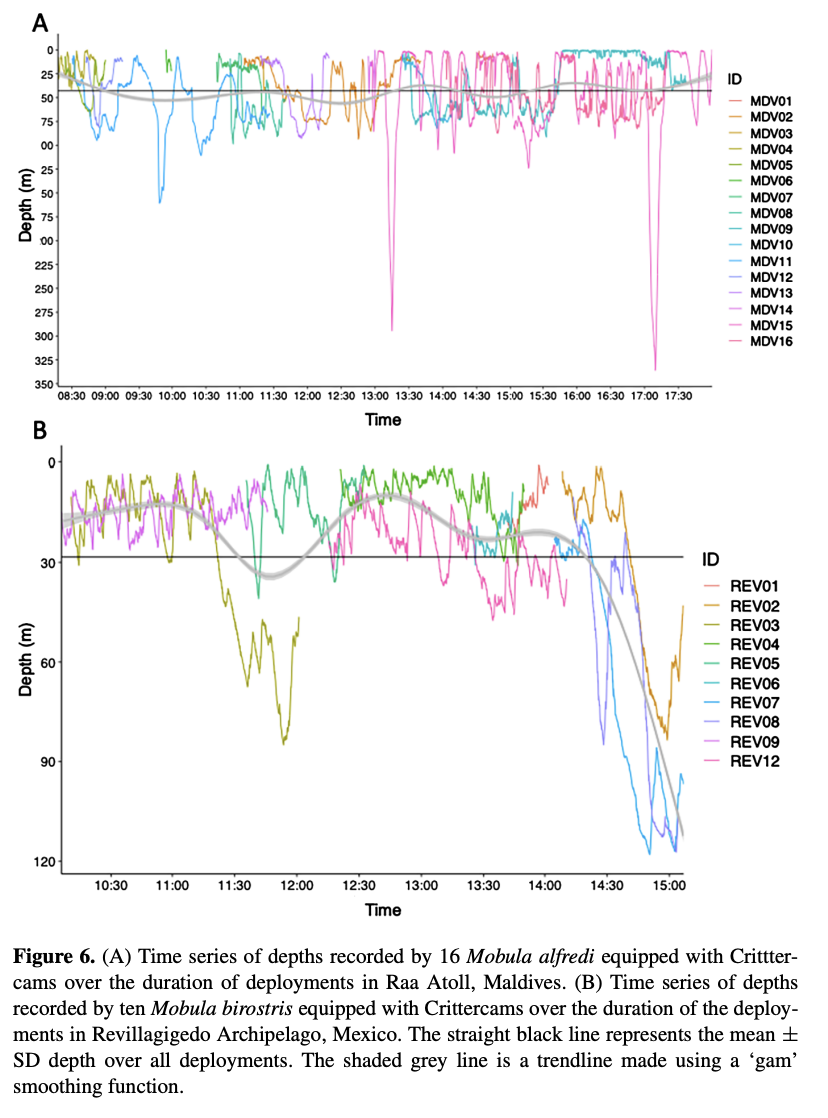
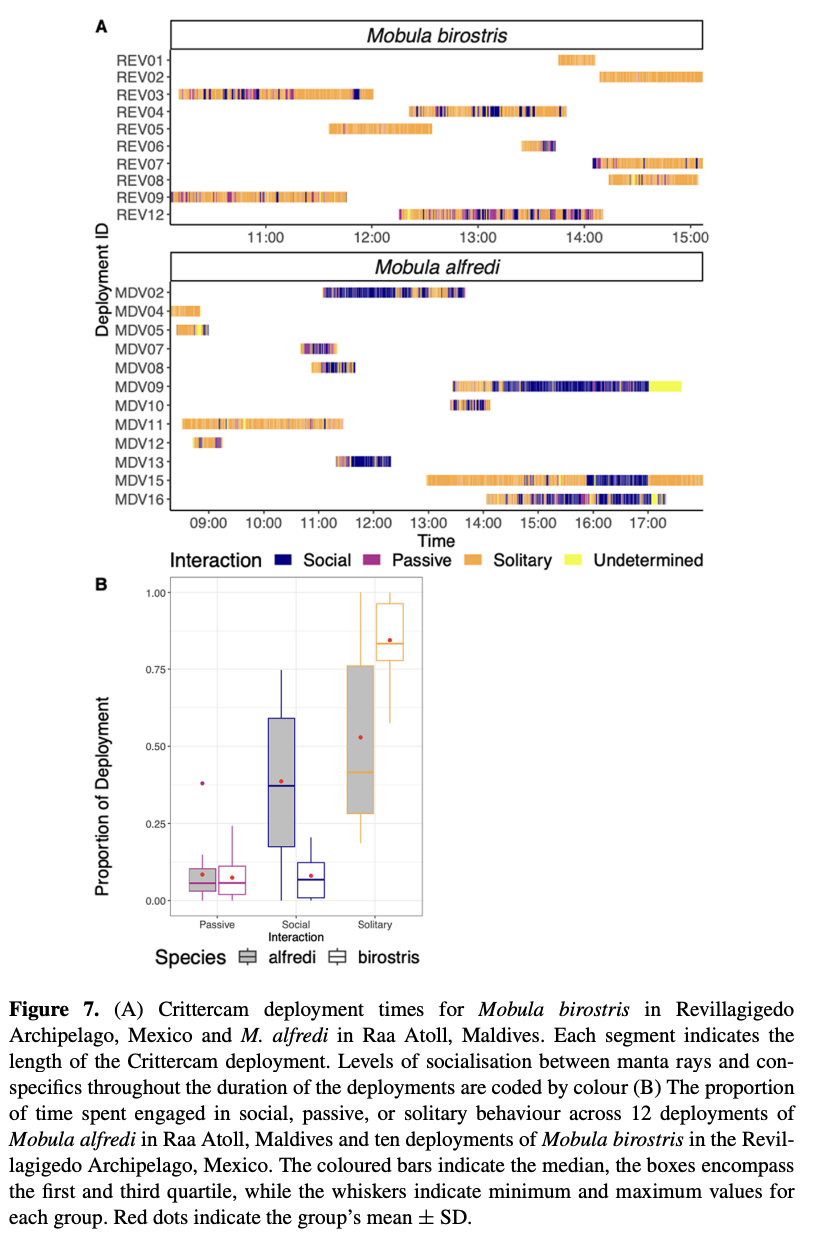
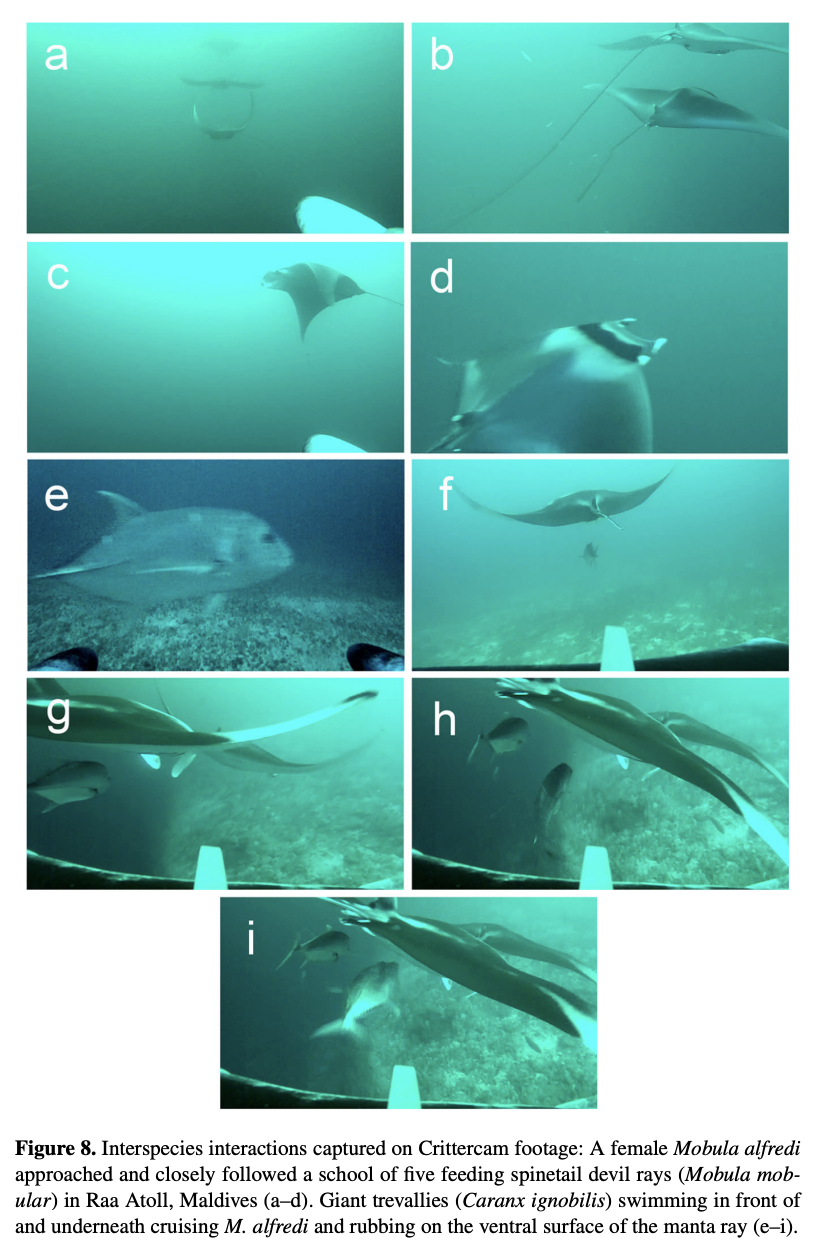
Summary: Animal-borne video cameras with depth and temperature sensors were attached to 16 reef manta rays in the Maldives and 12 oceanic manta rays in Mexico. This research yielded crucial insights into the behaviour and social dynamics of the two manta ray species. Both species primarily engaged in cruising during the day, with cleaning, courtship, and feeding being prominent behaviours in reef manta rays. Sociability was higher in reef manta rays, but the findings are specific to these populations. The study also revealed courtship events, interspecies interactions, and unique movement patterns. This technology holds promise for ecological research on manta rays.
Abstract
“Animal-borne video cameras equipped with depth and temperature sensors were deployed on 16 reef manta rays (Mobula alfredi) in Raa Atoll, Maldives and 12 oceanic manta rays (Mobula birostris) in the Revillagigedo Archipelago, Mexico. These deployments provided descriptive behavioural data that give vital context to existing biotelemetry data and enabled a comparison of the social dynamics between the two manta ray species. Overall, cruising was the most dominant daytime behaviour recorded for both species. For M. alfredi, cleaning was the second most common behaviour, followed by courtship and feeding. No courtship behaviour was recorded for M. birostris. Across M. alfredi and M. birostris deployments, individuals spent an average of 43 and 8% of recorded time interacting with conspecifics, respectively. Sociability was higher in M. alfredi than M. birostris, however the findings should be interpreted with caution beyond the two deployment populations and times. Crittercams captured multiple courtship events of M. alfredi at depths greater than recreational scuba diving limits and captured previously undocumented interspecific interactions with M. mobular. Crittercam deployments also recorded M. alfredi travelling in groups and hugging the contours of the ocean floor, possibly as a tactic to reduce predation risk and/or improve swimming efficiency, enforcing the importance of this novel technology as a valuable tool to gain new insight into the ecological drivers of habitat use by these species. Lastly, these quantitative and descriptive results provide context for future hypothesis-driven research questions using animal-borne video cameras for mobulid rays.”
Infographics
In The Press
Author Affiliations
Manta Trust
University of York, Department of Environment and Geography
Maldives Manta Conservation Programme
Institute of Environment, Department of Biological Sciences, Florida International University
Ocean Ecology Lab, Marine Mammal Institute, Department of Fisheries, Wildlife and Conservation Sciences, Oregon State University
Animal Welfare and Conservation Group, Department of Veterinary Medicine, University of Cambridge
California State University
National Geographic Remote Imaging Program
National Geographic Exploration Technology Lab
University of Exeter
Funded by
National Geographic Society
Four Seasons Resort Maldives



